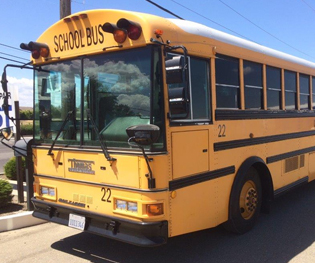Are there any other provisions for exemptions or delays?
The regulation has special provisions that delay some or all of the compliance requirements, but
fleets must report to take advantage of them. By April 29, 2011, fleets would need to report to
qualify for lower use and specialty agricultural truck exemptions until 2017 or 2023 and must report
hour meter readings for sweepers with auxiliary Tier 0 engines. Fleets would need to report by
January 31, 2012 to take advantage of delays until 2014 for small fleets with one to three vehicles,
log trucks, lower use construction trucks, and vehicles operating in parts of the state with less
polluted air.
What are the requirements for school buses?
School buses with a GVWR more than 14,000 pounds would need to meet PM filter requirements
from 2012 to 2014. School bus fleets would need to demonstrate that 33 percent of their buses
have PM filters by 2012, 66 percent by 2013 and 100 percent by 2014. If an engine cannot be
equipped with a PM filter it will need to be replaced by January 1, 2018. Pre-1977 model year
school buses must be replaced by 2012. No reporting is required, but fleets must keep records.
If I decide to sell my vehicle, do I have to notify the buyer of the requirements of this regulation?
Yes. Any person selling a vehicle subject to the Truck and Bus Regulation must provide a specific
disclosure statement in writing to the buyer on the bill of sale, sales contract addendum, or
invoice. See Regulatory Advisory 416 at
www.arb.ca.gov/enf/advs/advs416.pdf.
For more information
Other fact sheets and additional information are available at:
www.arb.ca.gov/dieseltruck
or by calling ARB’s diesel hotline at (866) 6DIESEL (866-634-3735). To obtain this document in
an alternative format or language, please contact (866) 634-3735. TTY/TDD/ Speech to Speech
users may dial 711 for the California Relay Service.




